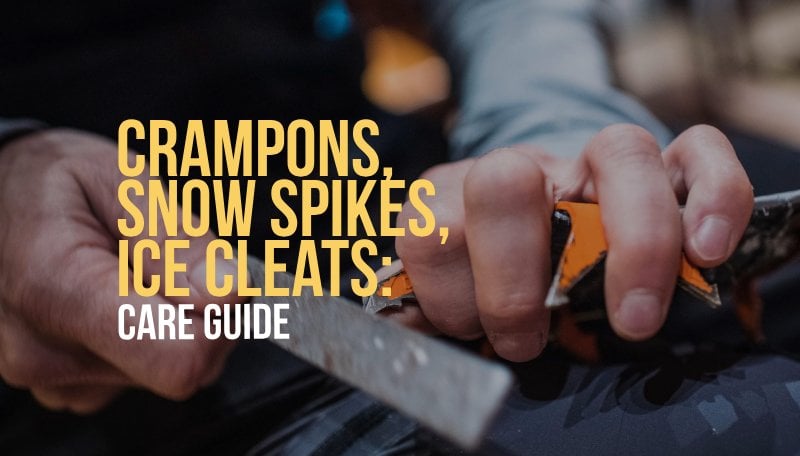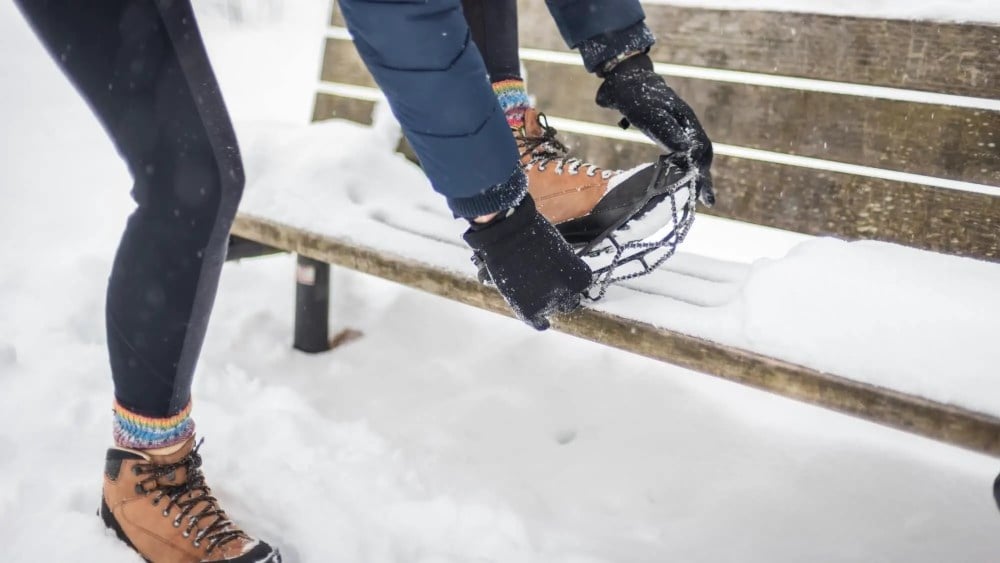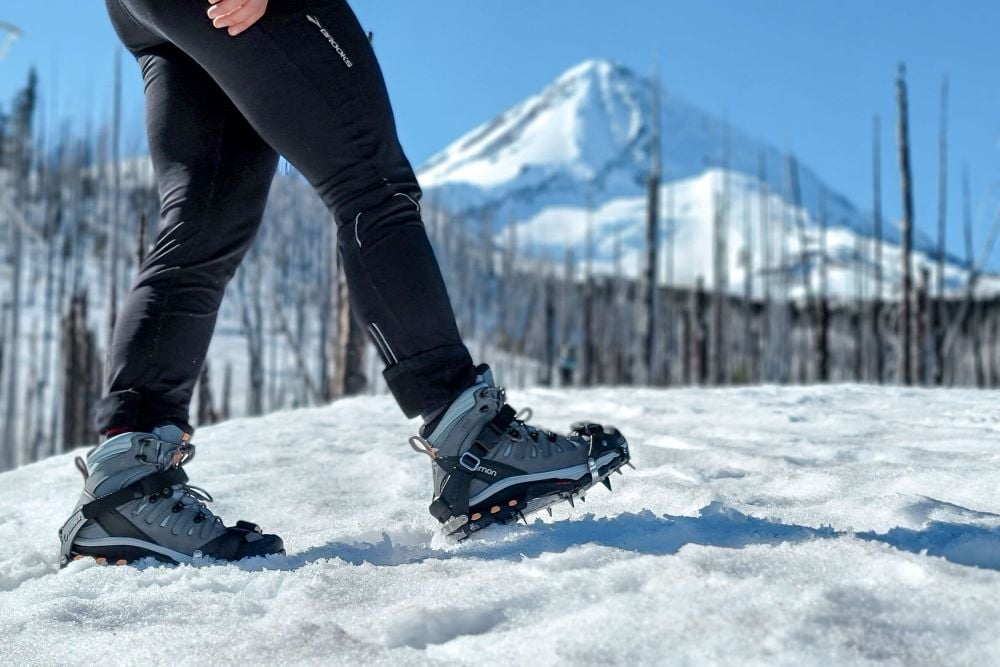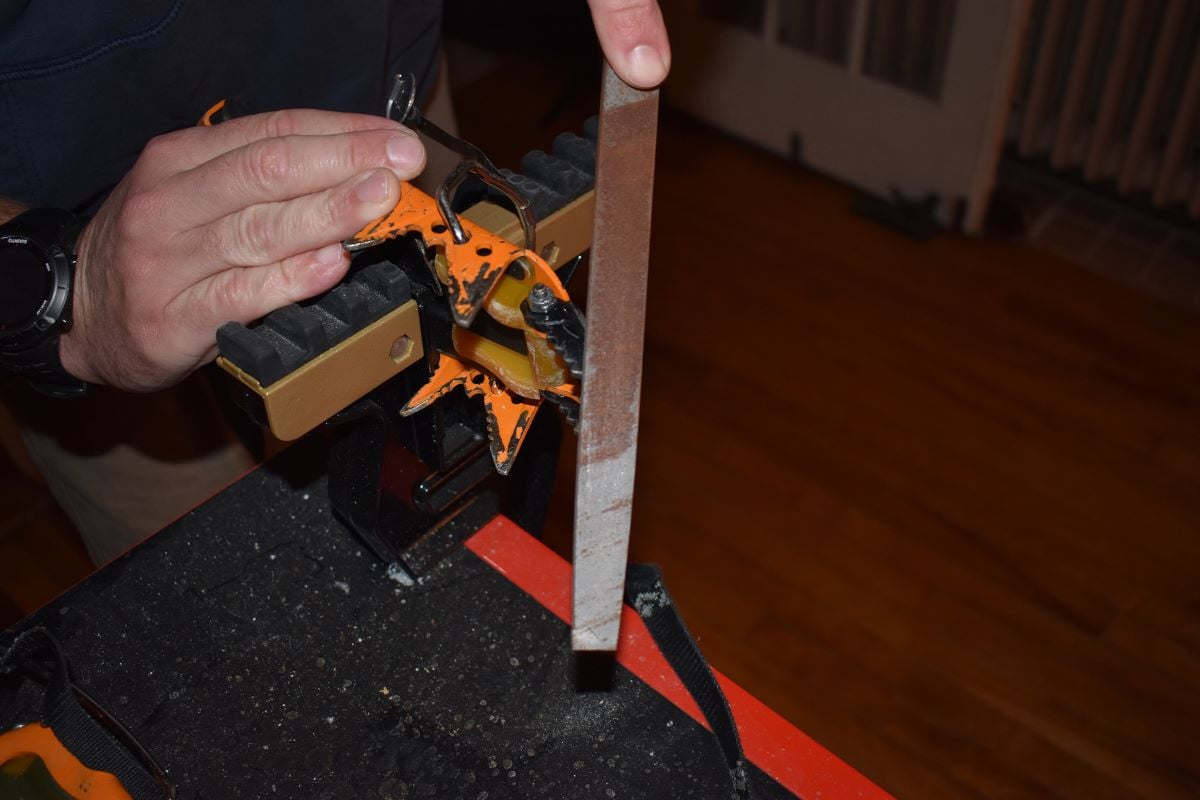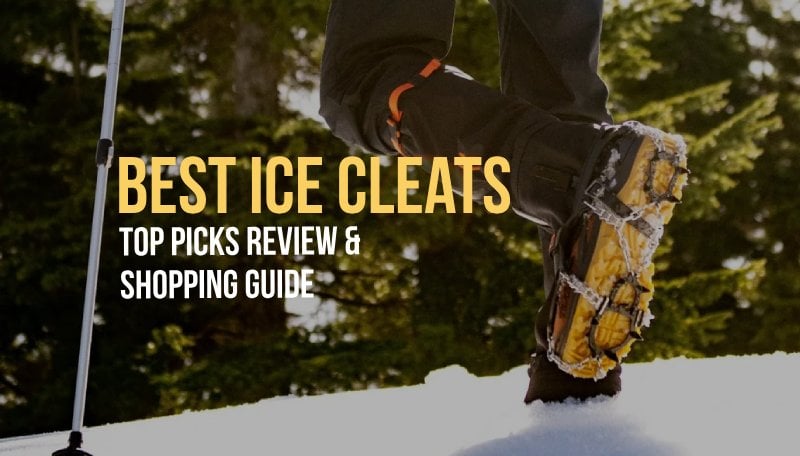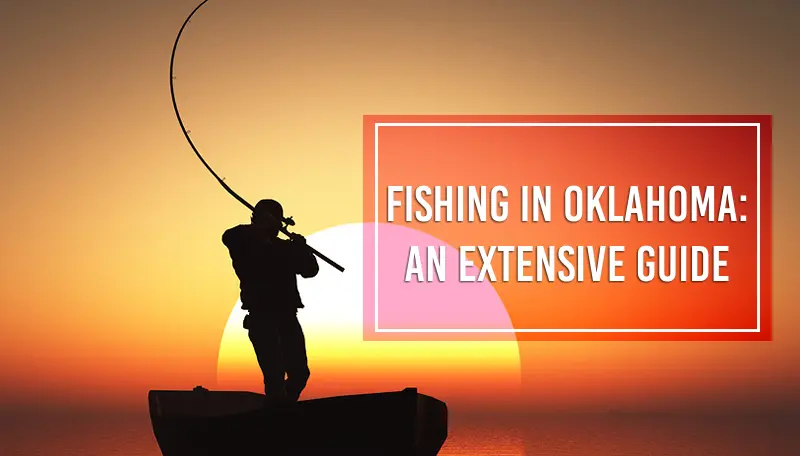Last Updated on
Ever tried walking on a slippery, icy surface? It’s like a scene from a comedy show, isn’t it? Only, it’s not so funny when you’re the one doing the slipping and sliding. That’s where shoe grips, such as ice cleats and crampons, come in handy. But how do you use and maintain them properly to ensure they serve you well and last long? Well, that’s what we’re here to discuss.
Contents
How to Use Crampons & Ice Cleats for Shoes
How to Maintain Crampons & Ice Cleats
– Cleaning
– Sharpening
– Storage
How to Use Boot Crampons & Ice Cleats Properly
Ice cleats are your best friends during icy conditions as they maintain your grip and prevent slips and falls. But how exactly should you use them?
Fit is Key
Just like Cinderella’s glass slipper, the fit matters. You want snug, not suffocating. Ice cleats or crampons shouldn’t be loose, too. You know how annoying it is when your sock slips off inside your shoe? Imagine that but with ice cleats in the middle of a snowy path.
So, when you’re buying your snow grips, think about what you’ll be strapping them onto – winter boots, hiking shoes, trail runners? Anyway, make sure you pick out a size that’s going to hug your footwear just right.
Walk Normally
You don’t need to imitate a penguin to walk on ice. The spikes or coils on the bottom will dig into the ice, providing the needed traction.
Use on Icy/Snowy Surfaces Only
Ice cleats and snow spikes are specifically designed for use on some kind of an icy, slippery surface. Using them on non-icy surfaces, such as hardwood floors, smooth tiles, or concrete, can lead to slips and falls. Moreover, it can damage the traction or the surface you’re walking on.
Don’t Run
While there are pliable ice cleats with studs or small spikes that can be used for running, ice spikes and crampons aren’t usually designed to tolerate that. Always move at a steady, controlled pace when wearing ice spikes.
Use Appropriate Style
There are several types of show grips, from cleats with studs for running and coil snow grips to hiking boot spikes and mountaineering crampons. Each offers different levels of traction on different surfaces, which determines their purpose. For instance, ice cleats are best for packed snow and ice but easily get clogged with wet or heavy snow. On the other hand, crampons for boots have more pronounced spikes and can handle these conditions much better but are more difficult to walk in.
When shopping, pay attention to the traction style and the category. Some are designed for casual walking, while others are made for hiking or mountaineering.
If you want to learn more about types of snow grips, read our post about choosing the right ice spikes/ice cleats for shoes and boots.
How to Care for Boot Crampons & Ice Cleats
So, you’ve mastered the art of walking on ice without landing flat on your backside or damaging spikes. Cool, but we’re not done yet. To ensure your trusty cleats, spikes, or crampons will serve you for several seasons, you’ve got to show them some love. And by love, we mean maintenance.
How to Clean Ice Cleats, Show Spikes & Crampons
Imagine trekking through the mud with your favorite boots and then just tossing them into the closet. Gross, right? Same goes for your shoe grips.
- Start by knocking off any big chunks of ice or snow. Then give them a good rinse with warm water to wash off any salt or grit. Why warm water, you ask? Well, it’s like how you’d wash off a dirty dish – the warm water helps to break down all the grime.
- If there’s some stubborn dirt stuck in the nooks and crannies, a soft toothbrush works wonders for getting into those hard-to-reach spots.
- After their rinse, let your shoe cleats or spikes dry naturally. Avoid direct heat sources like radiators, though.
- If you own ice grips with spikes made from carbon steel, here’s what you need to pay attention to. Carbon steel is a strong, hard, and lightweight material, but unlike stainless steel, it can rust if left in a moist environment. So, once your carbon steel spikes dry completely after cleaning, inspect them. If you notice surface rust on the carbon steel, use WD-40 to loosen the bonds between the rust and the steel surface. Wipe off the rust with a cloth. Be careful not to get WD-40 on the rubber or strap portions of the crampon.
- Try to clean your cleats, spikes, or crampons as soon as you can after using them. The longer you wait, the harder it’ll be to get them clean.
How to Sharpen Crampons & Ice Spikes
If you’re using your ice cleats on mixed terrain, they might need a little extra attention. Rocks can dull those sharp points quicker than you’d think. Therefore, don’t forget to sharpen the spikes regularly.
Grab a flat hand file and use it to sharpen your points in the direction of the file’s teeth. Aim for maximum sharpness while maintaining a straight line. And remember, you don’t want them too thin. Also, straighten bent points out. You might hear some folks suggesting using a grinder for ease or efficiency, but we don’t recommend that as the heat from the grinder can warp the metal.
How to Store Crampons, Spikes & Ice Cleats
Once your show grips are clean and dry, don’t just toss them in a drawer until next winter. Find them a nice storage spot where they won’t get squashed or twisted.
Check for Wear and Tear
Regularly check them for any damage or worn-out spikes and coils. If you spot something, it might be time for a new pair. Replace damaged parts as soon as possible.
Final Words
Ice cleats, shoe spikes, and crampons are great tools, but their effectiveness depends on how well you use and maintain them. Remember, the correct fit is crucial, walk normally, and only use them on icy surfaces. Regular inspection, cleaning, proper drying, and correct storage will ensure they serve you for a long time.
FAQ
How long do boot crampons last?
Well, that’s a bit like asking how long a pair of shoes will last. It depends on how frequently you use them and the terrain you’re covering. With regular use and proper maintenance, you can expect your crampons to last a few good seasons.
Should you sharpen your hiking crampons?
Absolutely! Regular sharpening ensures they can dig into ice and snow effectively, providing you with a secure grip.
Can you walk on rock with hiking crampons?
You can, but it’s not recommended. Walking on rock can dull your crampons faster, and you may slip and fall.
Can you wear crampons with regular boots?
Some crampons are designed to be used with specific types of boots, while others are more versatile. It’s important to check the manufacturer’s specifications.
How do you store ice cleats?
After cleaning and drying your ice cleats, find a cool, dry place to store them where they won’t get squashed or twisted. Proper storage helps extend their lifespan and keep them ready for your next icy adventure!
